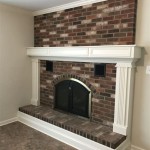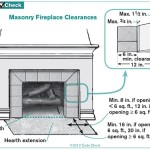Stone Gas Fireplaces: A Blend of Elegance and Efficiency
Stone gas fireplaces represent a fusion of natural beauty and modern convenience, offering a visually appealing and efficient heating solution for residential and commercial spaces. These fireplaces combine the timeless aesthetic of stone with the ease of use and clean burning capabilities of gas fuel, providing warmth and ambiance with minimal maintenance compared to traditional wood-burning options. The versatility in design and installation makes them a popular choice for homeowners seeking to enhance their living spaces with a focal point that exudes both rustic charm and sophisticated elegance.
The allure of stone gas fireplaces lies in their ability to mimic the appearance of authentic masonry fireplaces without the associated drawbacks. Natural stone, manufactured stone veneer, and other stone-like materials are employed to create a realistic and visually appealing surround, transforming the fireplace into a prominent feature within the room. The combination of flickering flames dancing behind a glass screen and the tactile texture of stone creates a cozy and inviting atmosphere, perfect for relaxation and entertainment.
Beyond their aesthetic appeal, stone gas fireplaces offer significant practical advantages. They eliminate the need for wood storage, chopping, and the messy cleanup associated with ash removal. The instant on/off functionality and precise temperature control provided by gas fuel make them a convenient and efficient heating source, allowing users to quickly adjust the heat output to their desired level. Furthermore, the sealed combustion systems used in modern gas fireplaces ensure safe and efficient operation, minimizing the risk of carbon monoxide leaks and maximizing energy efficiency.
Key Point 1: Design Versatility and Aesthetic Appeal
The design versatility of stone gas fireplaces is a significant factor contributing to their popularity. They can be tailored to suit a wide range of architectural styles and interior design preferences, from rustic and traditional to contemporary and minimalist. The choice of stone materials, colors, and textures allows homeowners to create a fireplace that seamlessly integrates with their existing decor or becomes a striking statement piece. This adaptability makes them suitable for various room settings, including living rooms, bedrooms, dining rooms, and outdoor living spaces.
Natural stone options, such as flagstone, river rock, and slate, offer a unique and organic look, showcasing the inherent variations in color and texture that only nature can provide. These materials bring a sense of authenticity and connection to the outdoors, creating a warm and inviting atmosphere. Manufactured stone veneer, on the other hand, provides a more consistent and cost-effective alternative, mimicking the appearance of natural stone with precision and durability. It is available in a wide range of styles, colors, and textures, offering greater design flexibility and control over the overall aesthetic.
The fireplace surround can be further customized with various design elements, such as mantels, hearths, and decorative accents. A wooden mantel adds a touch of traditional warmth and provides a surface for displaying cherished items. A stone hearth creates a visual grounding point and offers a comfortable place to sit and enjoy the fire. Decorative accents, such as metal inlays, tile mosaics, or sculpted details, can further enhance the unique character of the fireplace and reflect the homeowner's personal style.
The shape and size of the fireplace can also be customized to suit the specific needs of the room. Linear fireplaces, with their sleek and elongated design, are ideal for contemporary spaces, creating a dramatic visual impact and distributing heat evenly across a wide area. Corner fireplaces maximize space utilization and provide a focal point that can be enjoyed from multiple angles. Freestanding fireplaces offer flexibility in placement and can be used to create a cozy and intimate atmosphere in any room.
Moreover, the integration of lighting elements can further enhance the ambiance and visual appeal of the stone gas fireplace. Recessed lighting above the mantel can highlight the texture and color of the stone, creating a warm and inviting glow. Accent lighting within the firebox can accentuate the flames and create a mesmerizing visual display. The combination of stone, fire, and light creates a captivating focal point that transforms the room into a welcoming and relaxing sanctuary.
Key Point 2: Efficiency and Convenience
Stone gas fireplaces offer significant advantages in terms of efficiency and convenience compared to traditional wood-burning fireplaces. The use of gas fuel eliminates the need for wood storage and handling, saving space and reducing the physical labor involved in maintaining a fire. The instant on/off functionality allows users to quickly ignite and extinguish the flames with the flip of a switch or the press of a button, providing instant warmth and ambiance on demand.
Modern gas fireplaces are equipped with advanced control systems that allow for precise temperature regulation. Thermostats and remote controls enable users to adjust the heat output to their desired level, ensuring optimal comfort and energy efficiency. Zone heating capabilities allow homeowners to heat only the rooms they are using, reducing energy waste and lowering heating bills. Programmable timers can be used to automatically turn the fireplace on and off at predetermined times, providing consistent warmth and convenience without manual intervention.
The sealed combustion systems used in modern gas fireplaces ensure safe and efficient operation. These systems draw combustion air from outside the home and exhaust combustion byproducts directly outside, minimizing the risk of carbon monoxide leaks and improving indoor air quality. The sealed firebox also prevents drafts and heat loss, maximizing energy efficiency and reducing heating costs.
Furthermore, gas fireplaces require minimal maintenance compared to wood-burning options. There is no need to clean up ash, sweep chimneys, or worry about creosote buildup. Regular inspections and servicing by a qualified technician are recommended to ensure optimal performance and safety, but the overall maintenance requirements are significantly lower than those associated with wood-burning fireplaces.
The convenience and efficiency of stone gas fireplaces make them an attractive option for homeowners seeking a hassle-free heating solution that complements their lifestyles. They provide the warmth and ambiance of a traditional fireplace without the associated drawbacks, allowing users to enjoy the beauty of a fire with minimal effort and maximum comfort.
Key Point 3: Installation and Safety Considerations
The installation of a stone gas fireplace requires careful planning and adherence to local building codes and safety regulations. It is essential to hire a qualified and licensed technician to ensure proper installation and safe operation. The installation process typically involves running gas lines, venting exhaust fumes, and connecting the fireplace to the existing gas system. The technician will also ensure that the fireplace is properly sealed and insulated to prevent drafts and heat loss.
Proper venting is crucial for the safe and efficient operation of a gas fireplace. Direct vent fireplaces are the most common type, as they exhaust fumes directly outside through a sealed vent pipe. Vent-free fireplaces, on the other hand, do not require venting, but they are subject to stricter safety regulations and may not be permitted in all areas. It is important to consult with a qualified technician to determine the appropriate venting system for the specific fireplace model and installation location.
Carbon monoxide detectors are essential safety devices that should be installed in any home with a gas fireplace. Carbon monoxide is a colorless, odorless gas that can be deadly if inhaled. A carbon monoxide detector will alert occupants to the presence of the gas, allowing them to evacuate the premises and seek medical attention. Regular testing and maintenance of carbon monoxide detectors are crucial for ensuring their proper functionality.
The glass screen on a gas fireplace can become extremely hot during operation and should be handled with care. Children and pets should be kept away from the fireplace to prevent burns. Protective screens or barriers can be installed to provide an extra layer of safety. It is also important to ensure that flammable materials, such as curtains, furniture, and paper products, are kept a safe distance from the fireplace.
Regular inspections and servicing by a qualified technician are essential for ensuring the safe and efficient operation of a stone gas fireplace. The technician will inspect the gas lines, venting system, and other components to identify any potential problems. They will also clean the firebox and burner assembly to remove any debris or buildup that could affect performance. Addressing any issues promptly will help to prevent costly repairs and ensure the long-term safety and reliability of the fireplace.

Can I Install Stone Veneer Around My Gas Fireplace Stoneyard
Debating A Modern Or Traditional Fireplace Heat Glo

Stone Veneer Fireplaces Long Island Ny Fireplace Inserts Wood Stove Gas
Gas Fireplace And Stone Surround The Grate Haus

Stone Fireplaces

7 Fireplace Surround Ideas That Will Ignite The Room

Pin On House

Stone Fireplaces

Wallace Stone Gas Fireplace The

Cal Flame Stone Veneer Gas Outdoor Fireplace Frp908 3 Modern Ions
Related Posts








